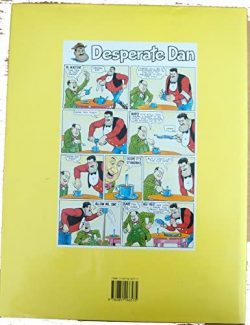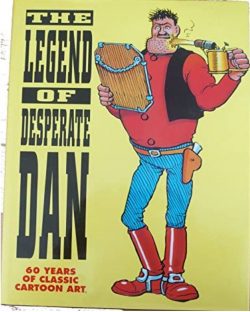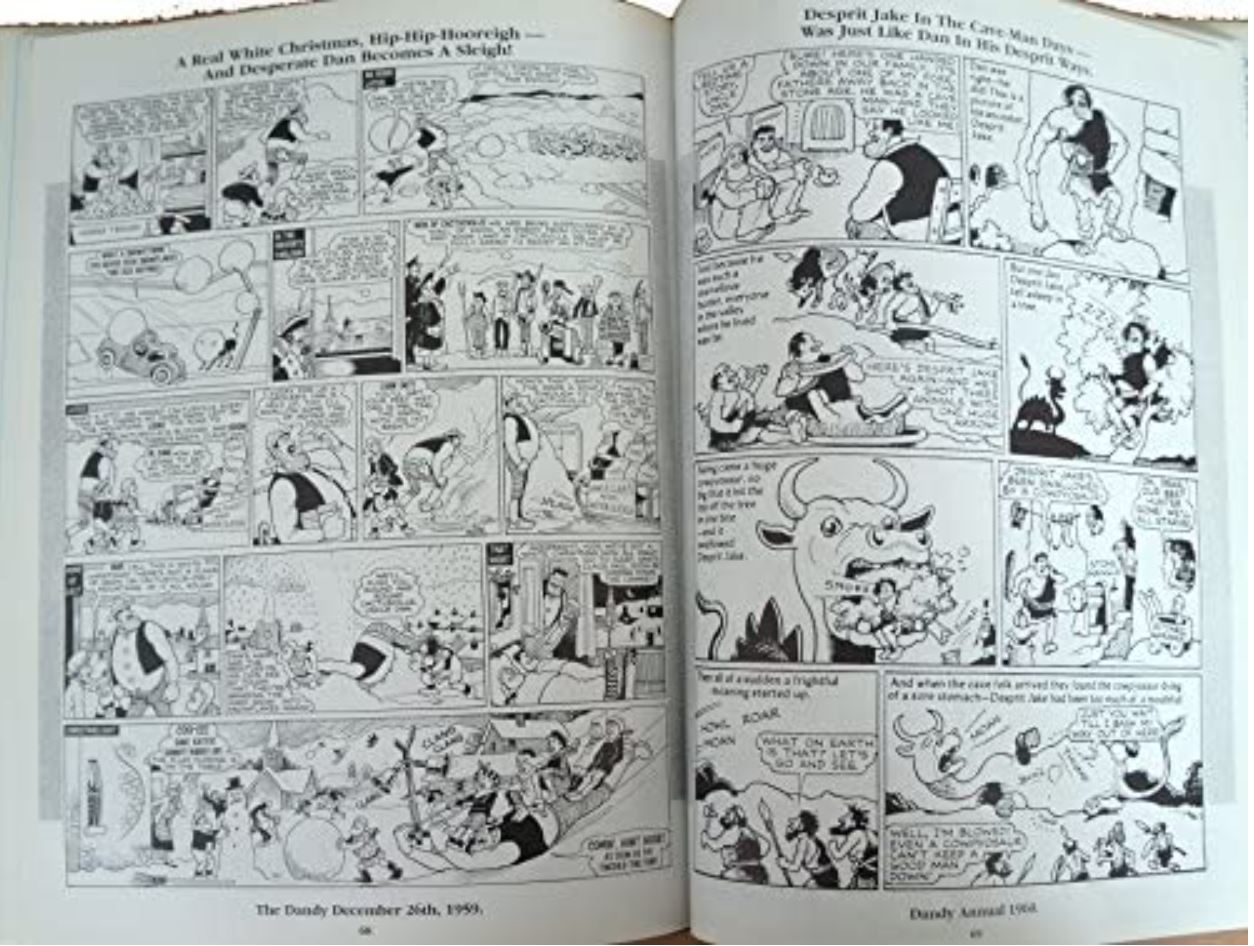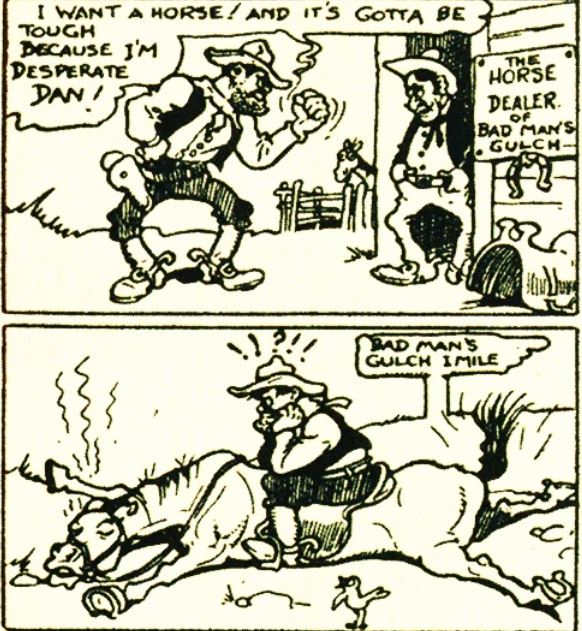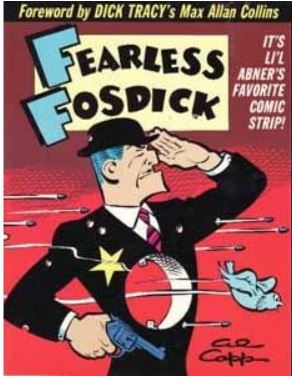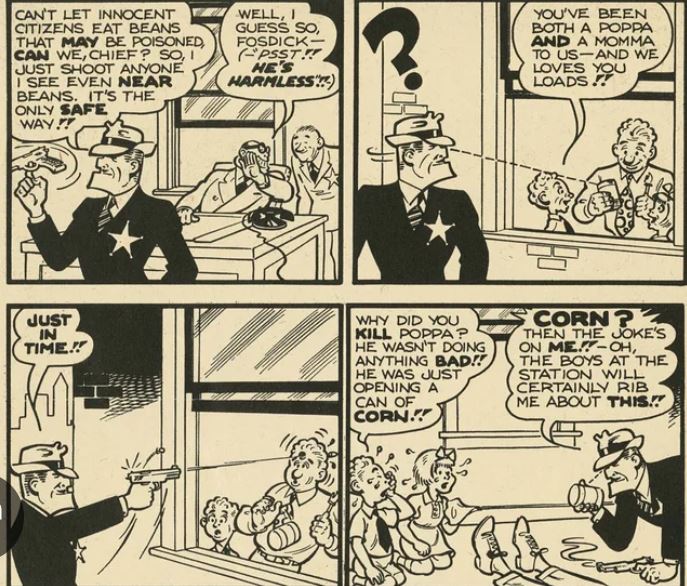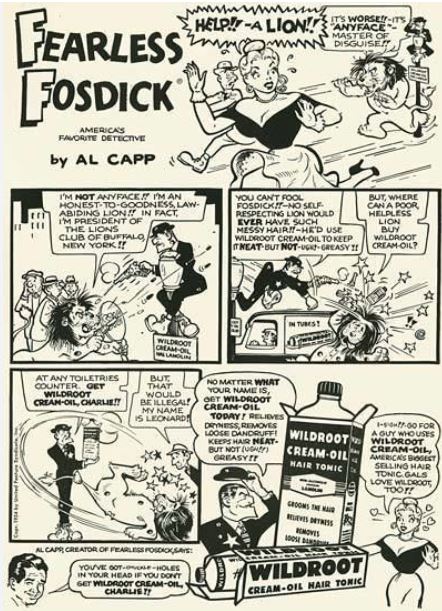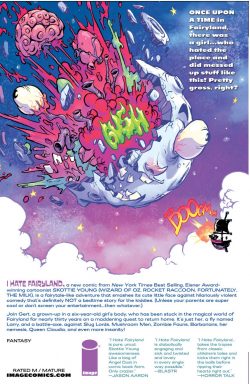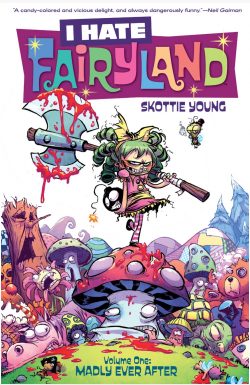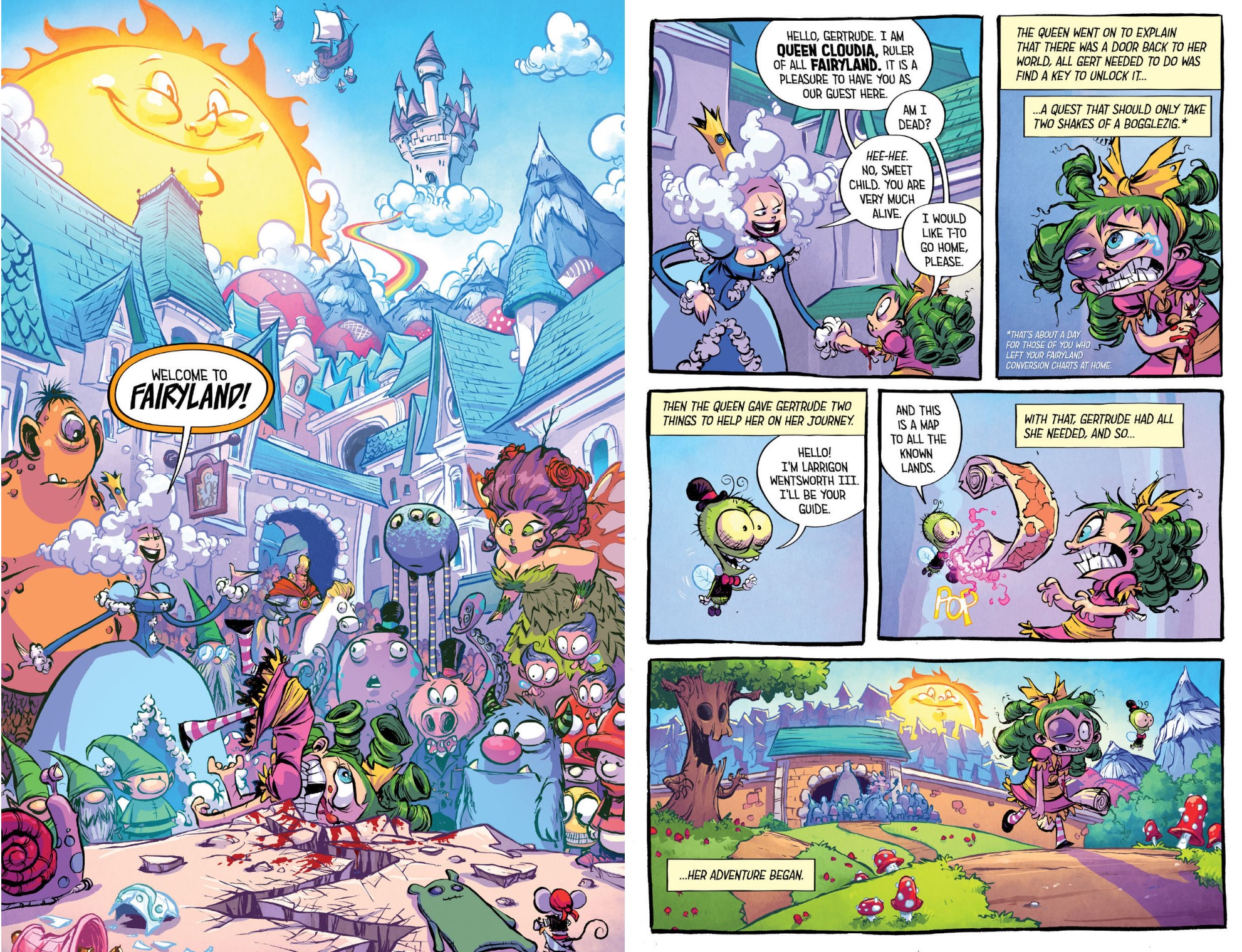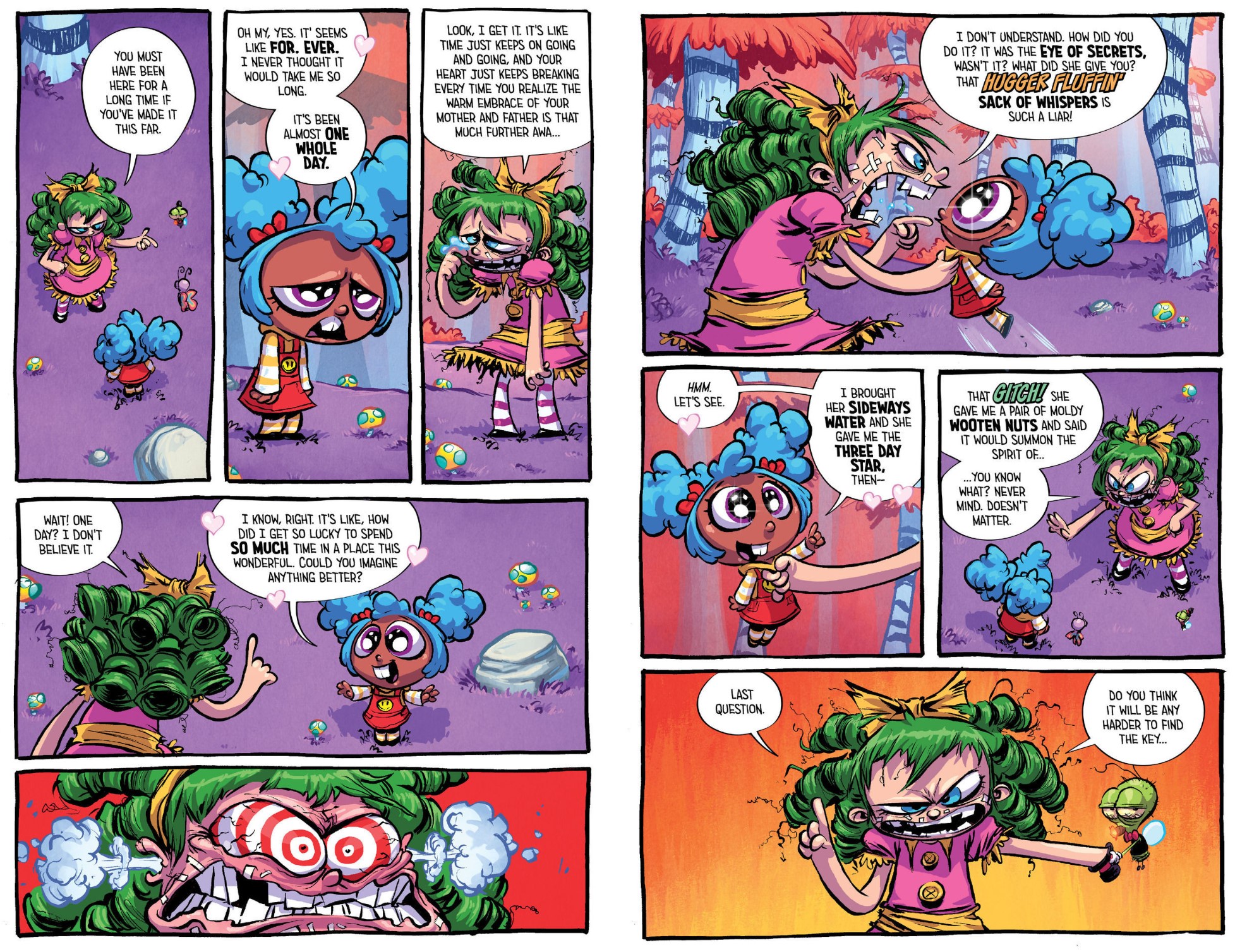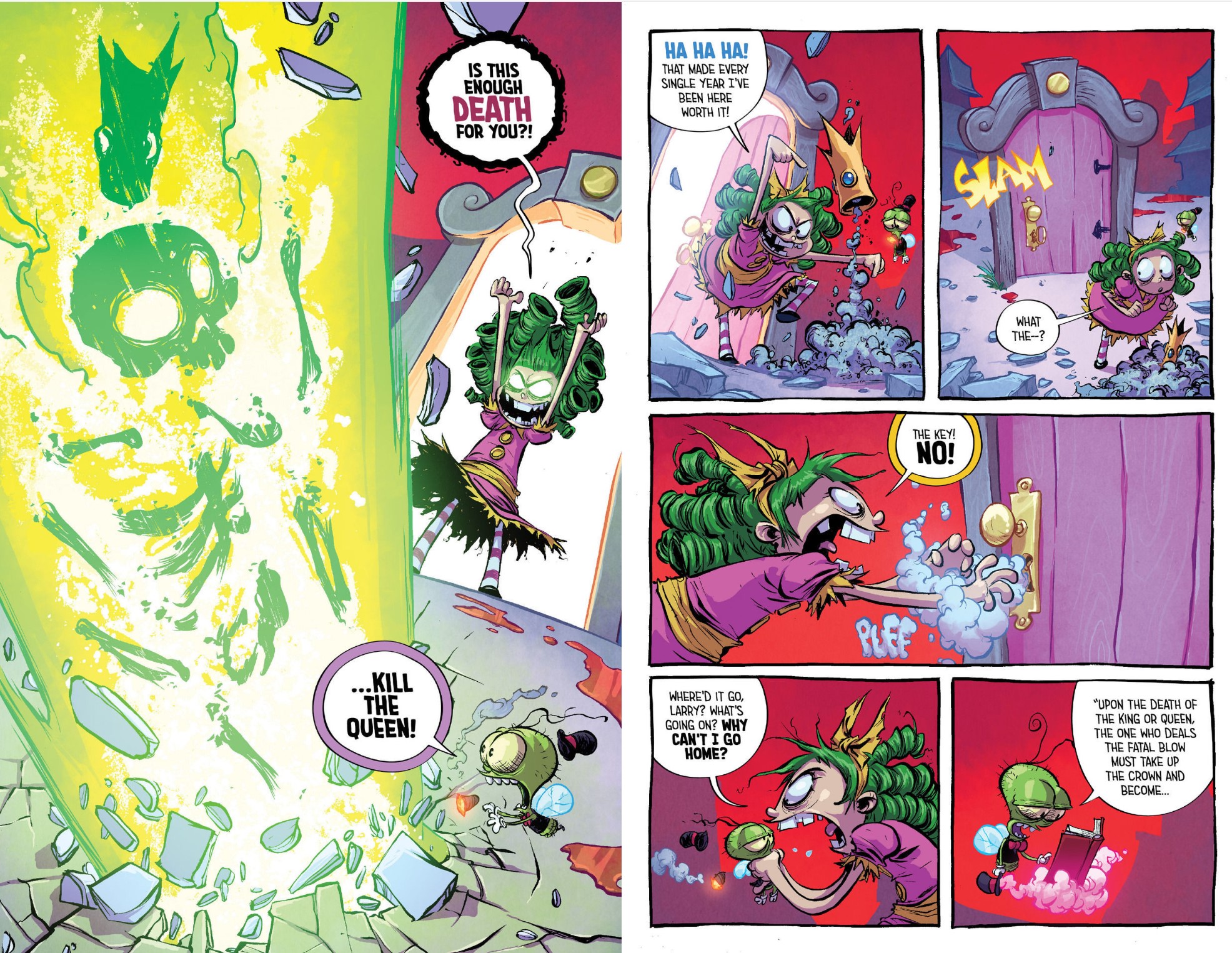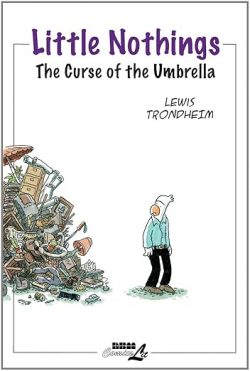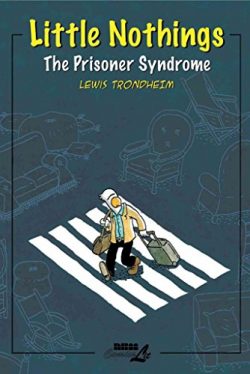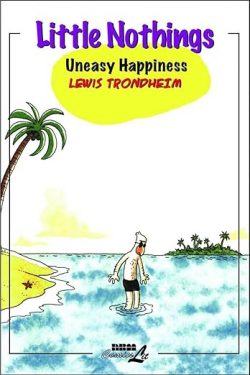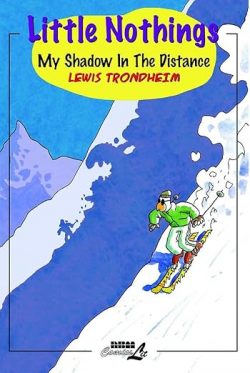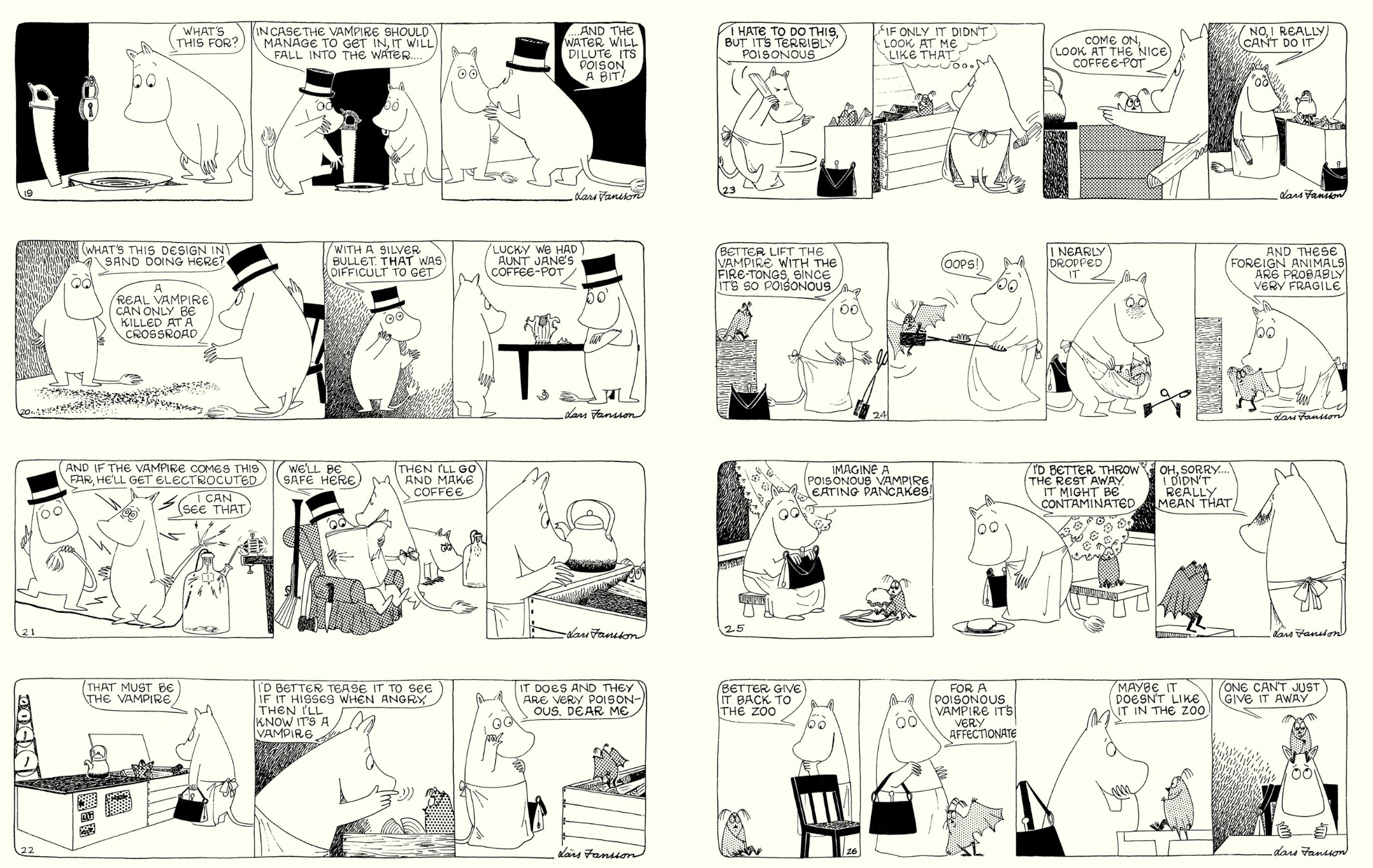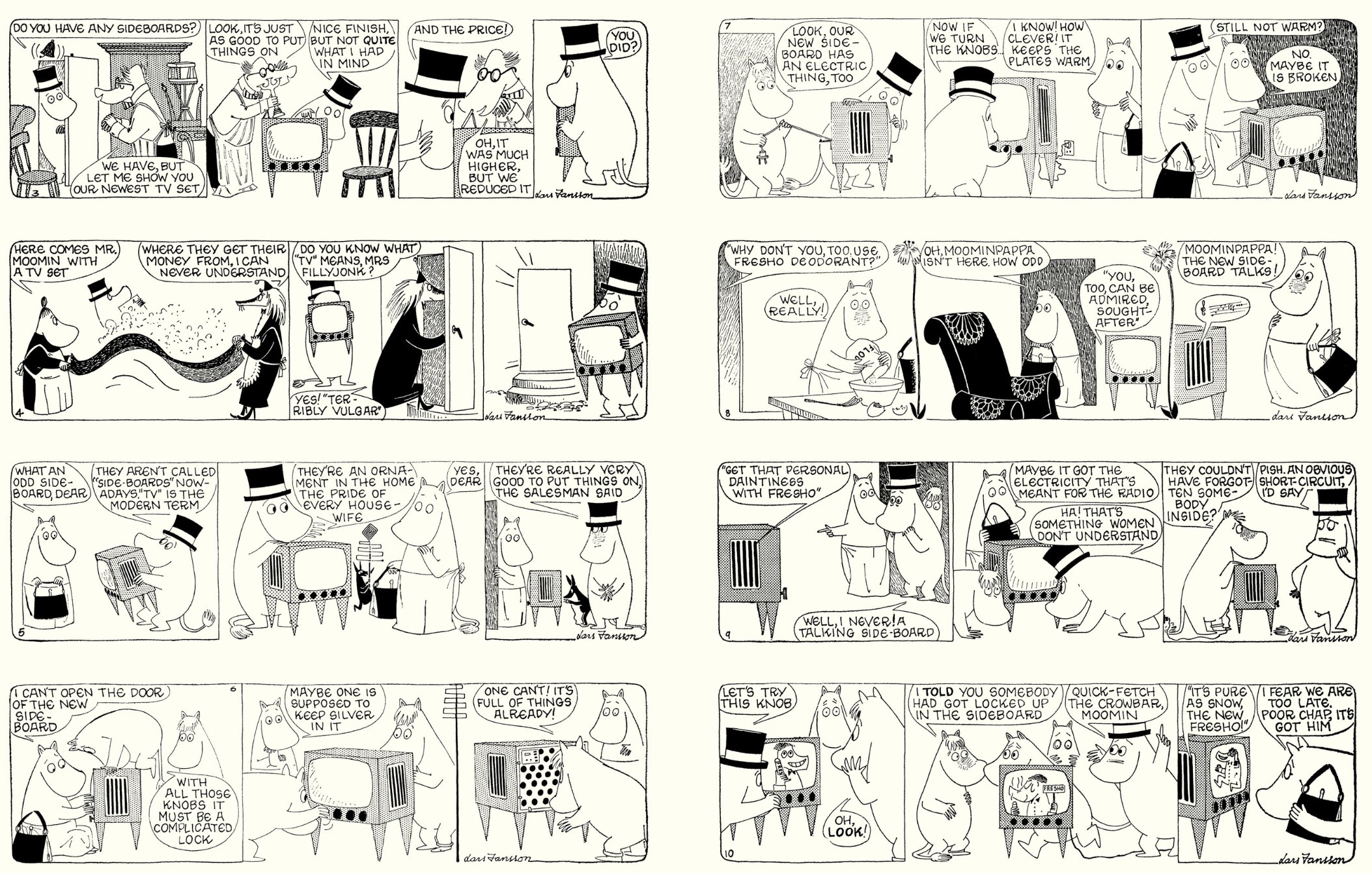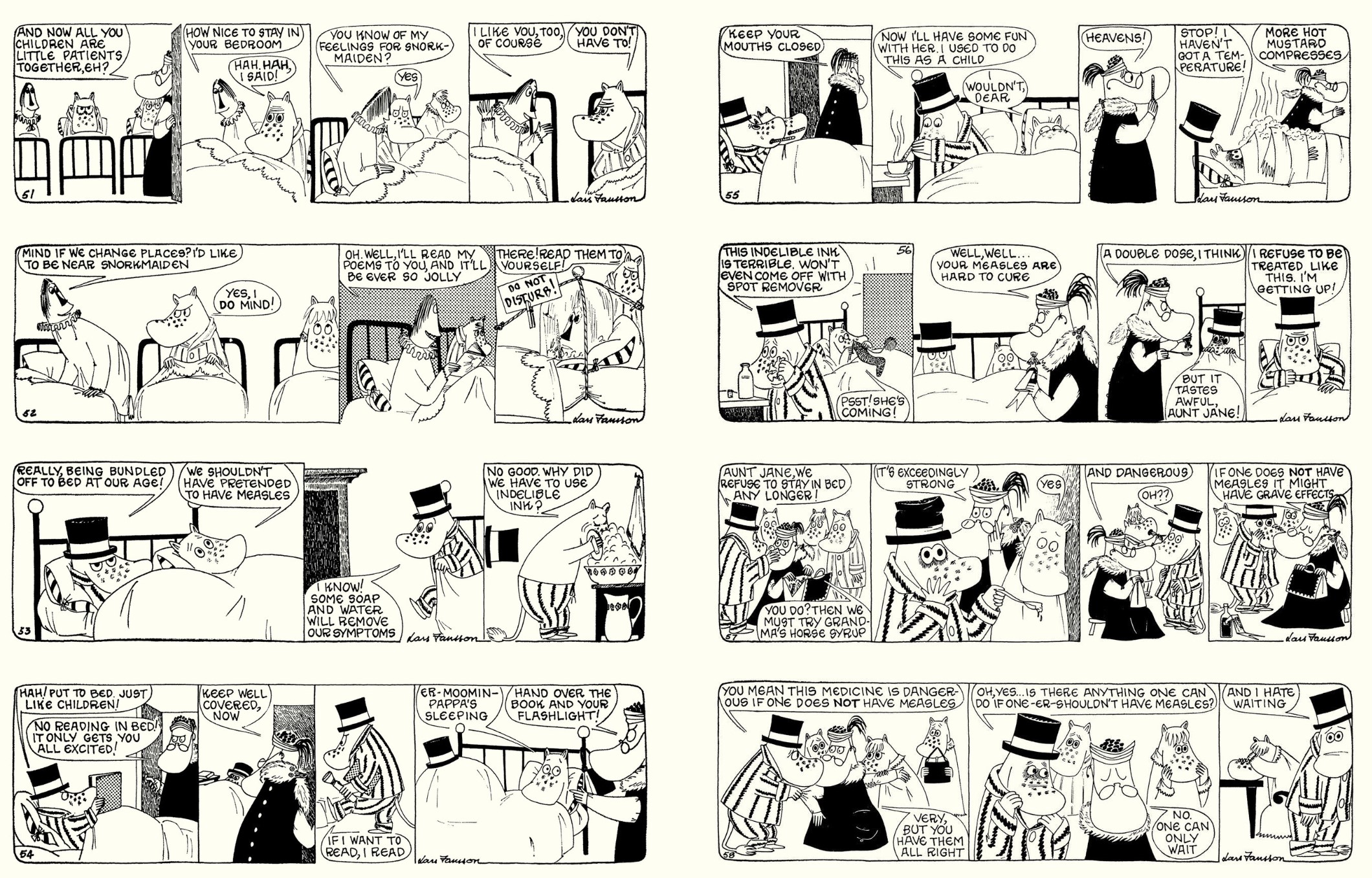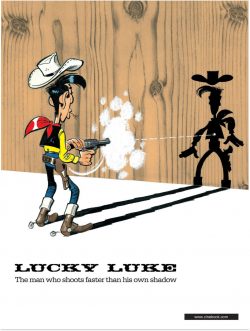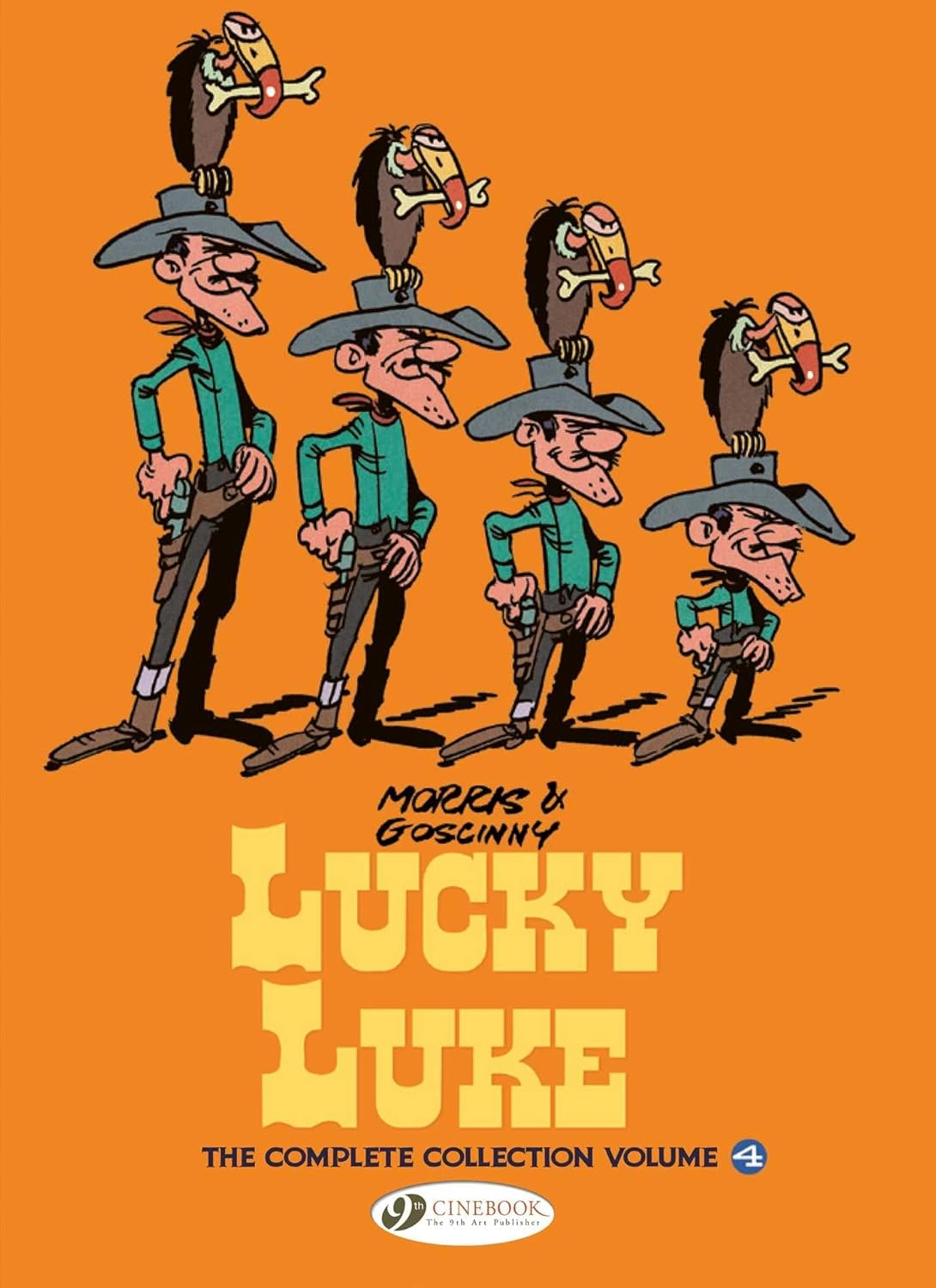
By Morris & René Goscinny, with Christelle & Bertram Pissavy-Yvernault: translated by Jerome Saincantin (Cinebook)
ISBN: 978-1-80044-169-9 (Album HB/Digital edition)
This book includes Discriminatory Content produced in less enlightened times.
Win’s Christmas Gift Recommendation: Family Thrills and Frolics No Movie Can Match… 8/10
On the Continent, the populace has a mature relationship with comics: according them academic and scholarly standing as well as meritorious nostalgic value and the validation of acceptance as an art form. Whilst tracing the lost origins of a true global phenomenon, this hardback and digital compilation celebrates the formulative early triumphs of a fictional hero who is certainly a national treasure for both Belgium and France, and it’s also timely in that this worldwide western wonder celebrates his 80th anniversary next year.
As we know him now, Lucky Luke is a rangy, good-natured, lightning-fast cowboy roaming the fabulously mythic Old West, having light-hearted adventures with his horse Jolly Jumper and interacting with archetypes, historical figures and mythic icons. His ongoing exploits have made him one of the best-selling comic characters in Europe (83 collected books plus around a dozen spin-offs and specials, totalling over 300 million albums in at least 33 languages thus far). That has generated all the usual spin-off toys, computer games, puzzles, animated cartoons, TV shows and live-action movies that come with that kind of popularity. It has also spurred a bunch of academicians to steer studies his way and garnered a lot of learned words. Some of those you can read here, if you’re keen…
Lucky debuted in 1946, courtesy of Belgian animator, illustrator and cartoonist Maurice de Bévère (“Morris”). For decades we all believed his first appearance was in autumn release Le Journal de Spirou Christmas Annual (L’Almanach Spirou 1947) prior to being catapulted into his first weekly adventure ‘Arizona 1880’ on December 7th 1946. However, the initial volume in this superb archival series proved the value of scholarship by revealing that the strip actually premiered earlier that year in the multinational weekly comic, albeit sans title banner and only in the edition released in France.
This fourth curated outing presents – in strict chronological order – strips published between February 2nd 1956 through September 1957 with all the art and pages fully restored, rejiggled and remastered to achieve maximum contemporary authenticity and synchronicity with the original weekly serialisation. Those stories were subsequently gathered as albums The Bluefeet are Coming!, Lucky Luke vs Joss Jamon and The Dalton Cousins and there’s even a few little extras scattered about for fascinated completists.
Before all that, though, there’s a wealth of background and unseen other works to enjoy, beginning with a lost cartoon gem as an old goldminer waggishly details ‘The Thousand Uses… of a Hat’…
A precocious, westerns-addicted, art-mad kid, well off and educated by Jesuits, Maurice de Bevere was born on December 1st 1923 in Kortrijk, Belgium. A far from illustrious or noteworthy scholar – except in all the ways teachers despise – Maurice sought artistic expression in his early working life via forays into film animation before settling into his true vocation. While working at the CBA (Compagnie Belge d’Actualitiés) animation studio, “Morris” met future comics superstars Franquin & Peyo, and worked as a caricaturist for weekly magazine Le Moustique. Morris quickly became one of la Bande des quatre (Gang of Four) comprising Jijé, Will and old comrade Franquin. Each was a leading proponent of a loose, free-wheeling artistic style known as the “Marcinelle School” which came to dominate Le journal de Spirou in aesthetic contention with the “Ligne Claire” style of Hergé, E.P. Jacobs and others in Le Journal de Tintin.
Previous volumes detailed Morris’s life, career, and achievements, and here Christelle & Bertram Pissavy-Yvernault augment past pictorial essays with ‘Wanted: Lucky Luke’ exploring life after returning to Belgium after his American holiday. It was May 1955 and the artist and his family had been gone for seven years…
Back home and back at work, Morris added to his output by illustrating novels, adding editorial content like quizzes to his Lucky workload and tasting new styles with a vast range of magazine covers, an inordinate number of which were ‘Sappy Moments’ for romance magazines and periodicals…
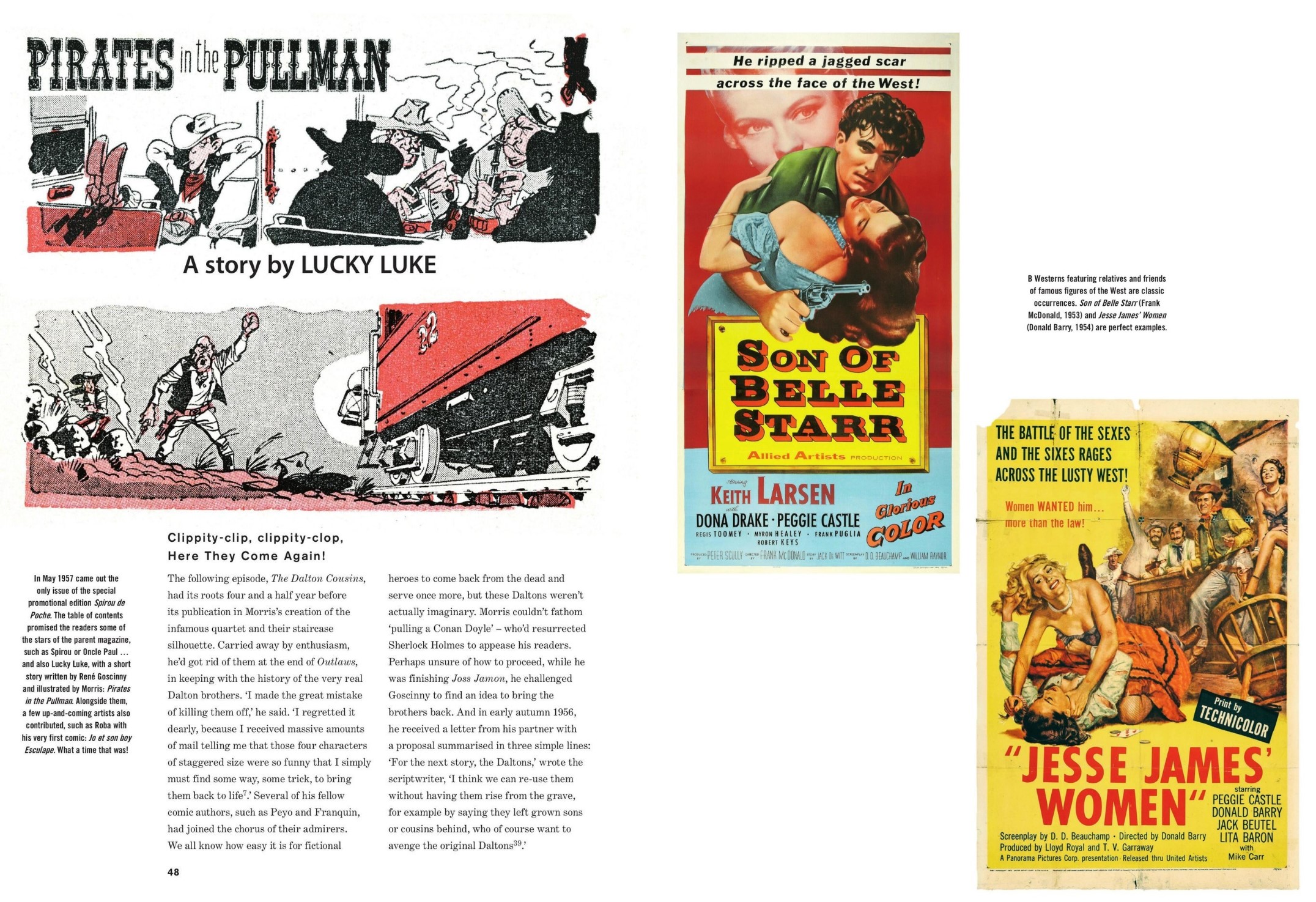
For Flemish readers he did cartoon sports columns and generally traded as a jobbing commercial artist, but all the while, he was still watching westerns and producing cowboy wonders and other comics stuff, such as the ‘Wild West Journalism’ article he wrote and included here in full. He was also constantly chatting with one of the Europeans he’d met in the US: cartoonist and scripter René Goscinny…
Accompanied by published cartoons, covers, script pages, contemporary ads, family photos and tons of original art, the in-depth treatise focuses on artistic development and the team building that resulted in one of comics’ most fruitful double acts Goscinny.
Morris had taken nearly a decade to craft nine albums of affectionate sagebrush parody and action. Now, with Goscinny as regular wordsmith, Luke would attain dizzying heights of super swift superstardom, commencing with Des rails sur la Prairie (Rails on the Prairie), in Le Journal de Spirou in August 1955. Before that though we enjoy a lost treat that first appeared in Risque Tout #11 (February 2nd 1956) prior to inclusion in Under A Western Sky. ‘Androcles’ details animal lover Luke’s interactions with a mistreated circus bear and proves that western justice applies equally to all…
Then the main event begins with all-Morris action as originally serialised in LJdS #938-957 (April 5th – August 16th and released in 1958 as Alerte aux Pied-Bleus/The Bluefeet are Coming!) It’s seen here with original French cover, editorial material and even ads.
A procession of linked gags sees Morris pile on and kick hard familiar themes and scenarios as the town of Rattlesnake Valley welcomes wanderer Lucky. The lone rider is just in time to save super-superstitious sheriff Jerry Grindstone from sneaky gambler/professional card cheat Pedro Cucaracha. His plans to fleece the old codger result in his painful and shameful eviction from civilisation; so naturally, the scoundrel tries to rob and blow up the bank on his way out. Chased into the surrounding desert, the scurvy Mexican then gulls the alcoholic Great Chief of the local Bluefeet Indians into laying siege to the town, tempting the old warrior with promises of unlimited booze…
Old Parched Bear is happy to oblige, and soon the town is forming a militia, telegraphing for the cavalry and erecting barricades. As food and water grow scarce profiteering proliferates, with Lucky and Jerry battening down the hatches and bolstering morale for a protracted and perilous defence of their lives and loved ones…
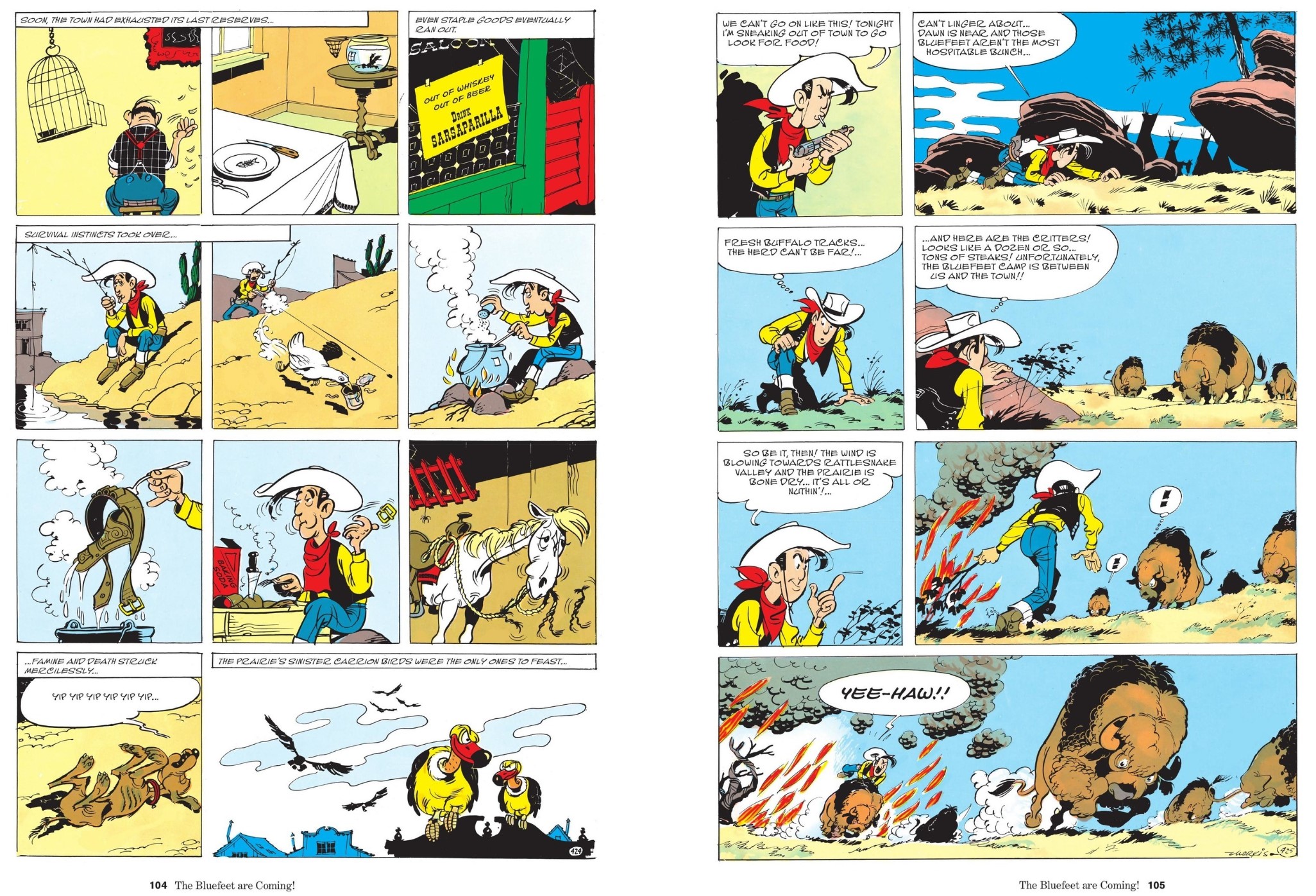
Against that framework of classic movie moments there are rich slapstick pickings as spies, crossdressers, raids & counter-raids and devious secret weapons all build to a bombastic finale, with Pedro and Parched Bear attempting all manner of nefarious invention to get respectively vengeance and more “firewater”…
… And then, when it’s almost too late, the Cavalry arrive… just after the deployment of late arriving support from Greenfeet and Yellowfeet branches of the family of First Nations. It can only end in catastrophe unless Lucky can contrive a solution…
Daft and Spectacular in equal amounts, this is perhaps a tale for older kids who have gained a bit of historical perspective and social understanding, although the action and slapstick situations are no more contentious than any old movie – as if that’s any help or comfort…
Rushing right on, Le Journal de Spirou #966-989 (October 18th 1956 – March 28th 1957) offered an uncredited Goscinny script as La bande de Joss Jamon and/or Lucky Luke contre Joss Jamon pitted our laconically lanky hero against a very different kind of bad guy. Again on view with original cover and ads, what we know as Lucky Luke vs Joss Jamon finds our happy wanderer facing guns, lynching, slander, a diabolical frame-up and political office, after Confederate soldiers turn their wartime skills to garnering personal profit in the years of Reconstruction that followed the American Civil War.
However, as vile as sly conman Pete the Wishy-washy, brutish Jack the Muscle, murderous Indian Joe, ruthless trickster Sam the Farmer and cardsharp Bill the Cheater may be, their combined villainy cannot match that of their ambitious scheming leader Joss Jamon. He has a dream of running the state if not the country and enough drive to make it happen…
How that doesn’t happen sees Luke battle them singly and in a wild bunch as Jamon moves into Los Palitos and frames Luke for robbery. Barely escaping the neck-stretching, Luke swears to bring back the real culprits in six months or surrender himself for the waiting noose…
The trail finds Jamon in bustling metropolis Frontier City where, after taking over businesses by making offers nobody dares to refuse, Jamon is running for Mayor. Despite physically a match for his enemies, Luke now needs to change tactics to unseat the entrenched plutocrat. That means a menace-packed war of nerves and even running as a rival candidate…
Even though election day is the farce you’d expect, and Lucky is branded an outlaw, he has one last card to play… civil dissatisfaction and unrest…
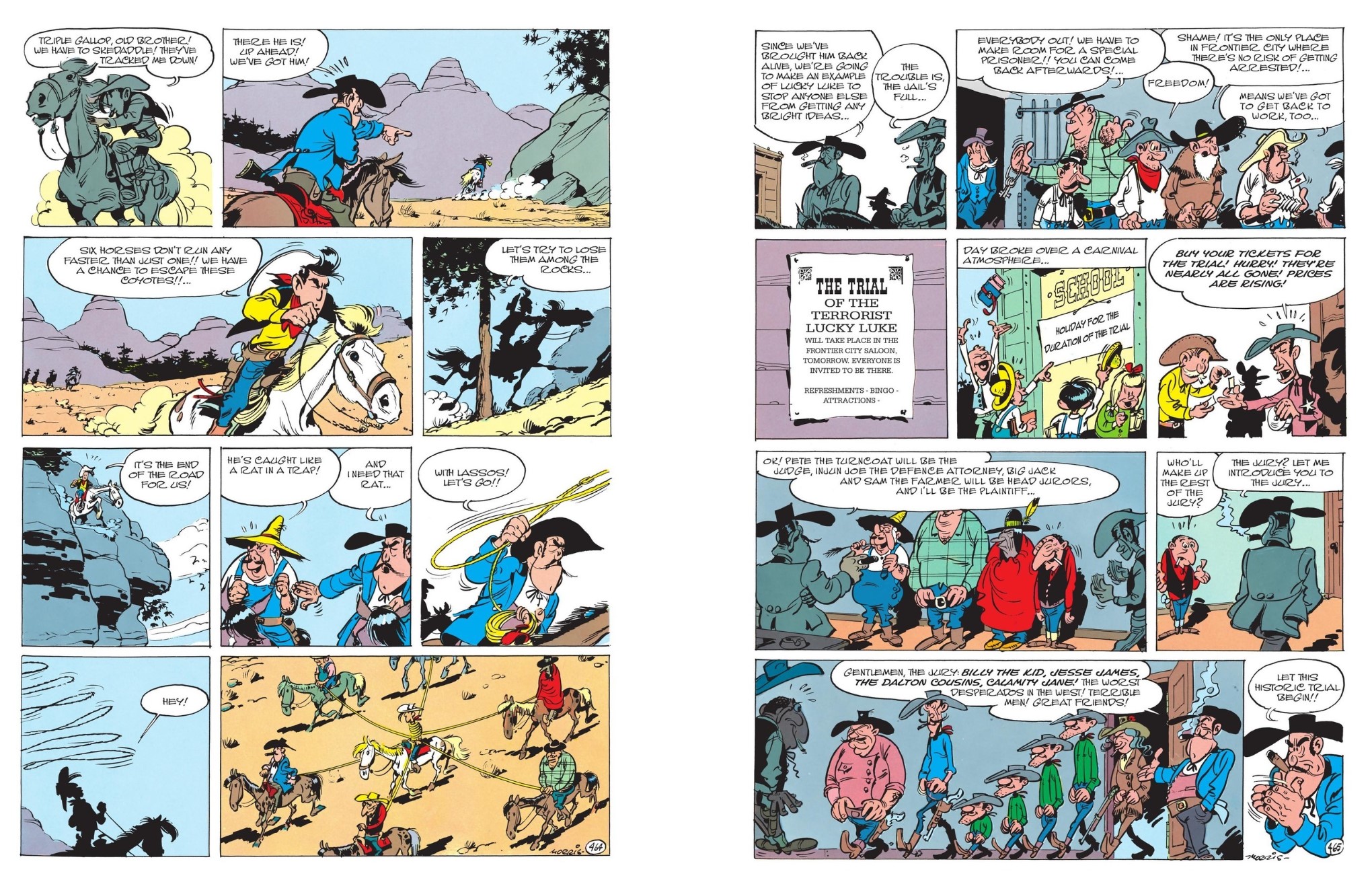
Witty, wry and cynical, this yarn is actually more socially relevant mow than it ever was when politicians at least feared the repercussions of being caught doing wrong…
Still anonymous, Goscinny also wrote closing inclusion. The Dalton Cousins was first enjoyed in LJdS #992-1013 (April 18th to September 12th 1957) and reappears here with original cover and ads. For this manic mirth-fest Goscinny performed a much-demanded act of necromancy, resurrecting a quartet of killers Lucky had already dealt with, but whom readers want not dead but alive…
Published back in December 1954 Hors-la-loi was Morris’ 6th album and included a strip which saw our hero meet and beat Emmett Bill, Grat & Bob Dalton: real life badmen who had plagued the west during the 1890s. On those funny pages, Lucky was hired by railroad companies to end the depredations of the desperados who had been imported into the strip, but given a comedic, yet still vicious spin. A cat & mouse chase across the wildest of wests saw Luke constantly frustrated by close calls and narrow escapes in superbly gripping movie set-pieces until, inevitably, justice claimed the killers. At the close, Morris had Lucky end the gang forever, but they and the story itself were insanely popular with fans. These owlhoots were comedy gold and ideal foils, so eventually they returned in the form of their own cousins…
From the response to that tale eventually came this aforementioned revival, as Goscinny’s third collaboration. When this iteration of the appalling Dalton Brothers – now and forever after Averell, Jack, William & devious, slyly psychotic, tyrannical diminutive brother Joe – showed up, the course of the strip altered forever…
It opens on a remote farm in Arizona where four brothers mourn the loss of the murderous bandits they resemble and are related to. They know they aren’t nearly good enough to fill the dead men’s boots or kill their killer Lucky Luke… but they are willing to try their hardest to change all that…
The replacement Daltons’ first attempt to settle the score is frankly embarrassing, but fortune and persistence gradually harden and hone them. They even at one stage have the happy wanderer train them…
Ultimately, however, after they besiege a town and regularly succeed in theft and terrorism, Lucky is forced to take action before they become as great a menace as their dearly departed favourites ever were…
Sadly, he leaves it too late and is forced to resort to tricky tactics of dividing to conquer. It either that or be hunted down like a dog: a role he’s just not suited for…
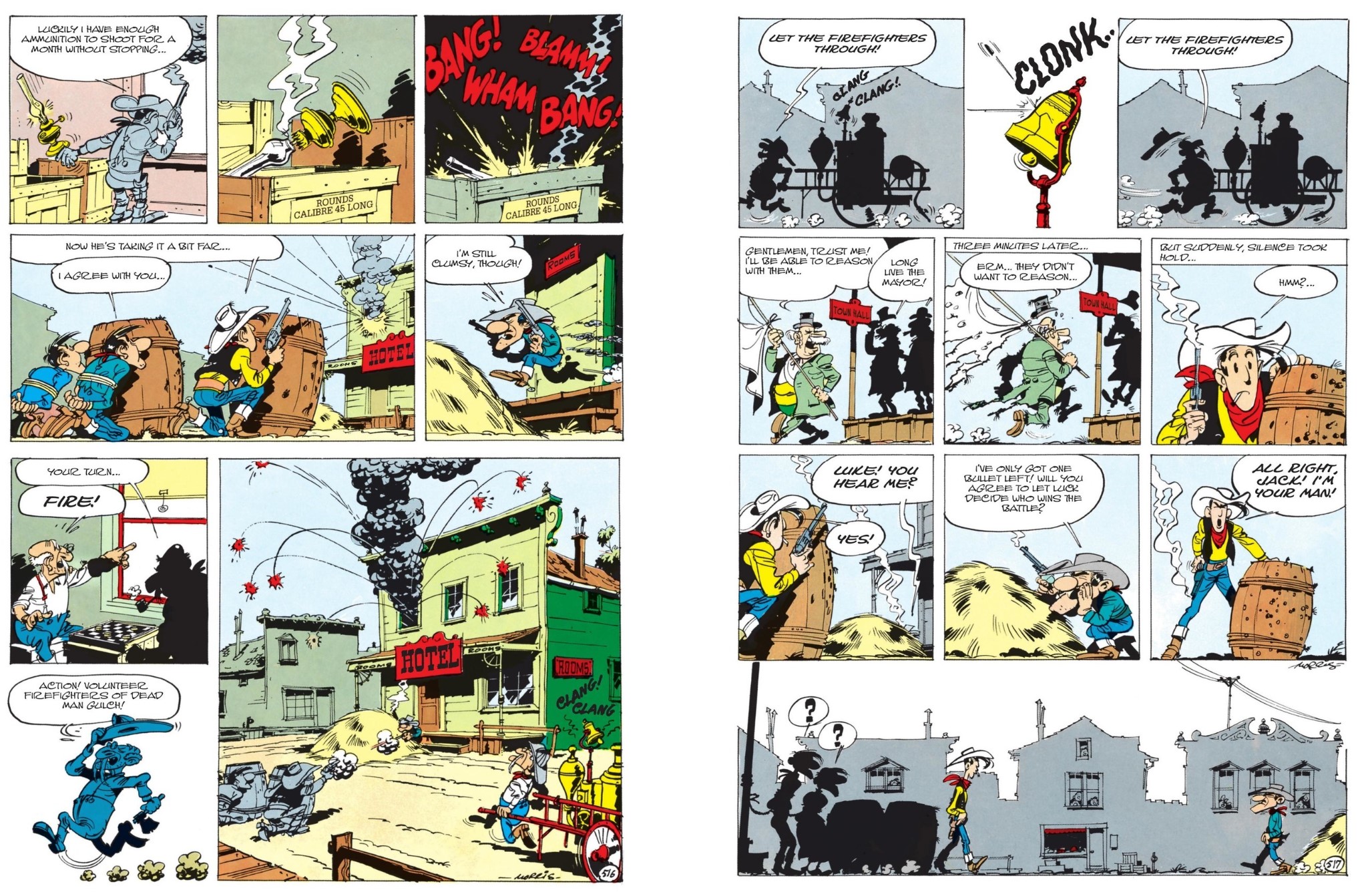
As much thriller as comedy romp, this yarn proved how crucial great villains are to any hero and started a western showdown that fruitfully persists and thrives to this day…
Graced with biographies of Morris and Goscinny and peppered with contemporaneous extras this is perfect for kids with a smidgen of historical perspective and social understanding, although the action and slapstick situations are no more contentious than any Laurel and Hardy film – perfectly understandable as Morris was a huge fan of the duo. These formative forays are a grand old hoot in the tradition of Destry Rides Again or Support Your Local Sheriff, superbly executed by master storytellers, and a wonderful introduction to a unique genre for anyone who might well have missed the romantic allure of the Wild West that never was…
Original edition © Lucky Comics 2022. English translation © 2025 Cinebook Ltd.
All pages & illustrations relating to The Thousand Uses of a Hat, Androcles and The Bluefeet are Coming! © Morris/Goscinny/Dupuis 2022.
All pages & illustrations relating to Horse Thieves, Lucky Luke vs Joss Jamon and The Dalton Cousins © Morris/Goscinny/Dupuis 2022.
All documents relating to Morris are © Morris/Dupuis 2022.
All documents relating to René Goscinny are © Anne Goscinny 2022 barring cited exceptions.
Today in 1948 Underground Commix cartoonist and proud pornographer Larry Welz (Yellow Dog, Captain Guts, Cherry PopTart) was born, whilst in 1992 epically long-running UK adventure weekly The Victor published its last issue.

